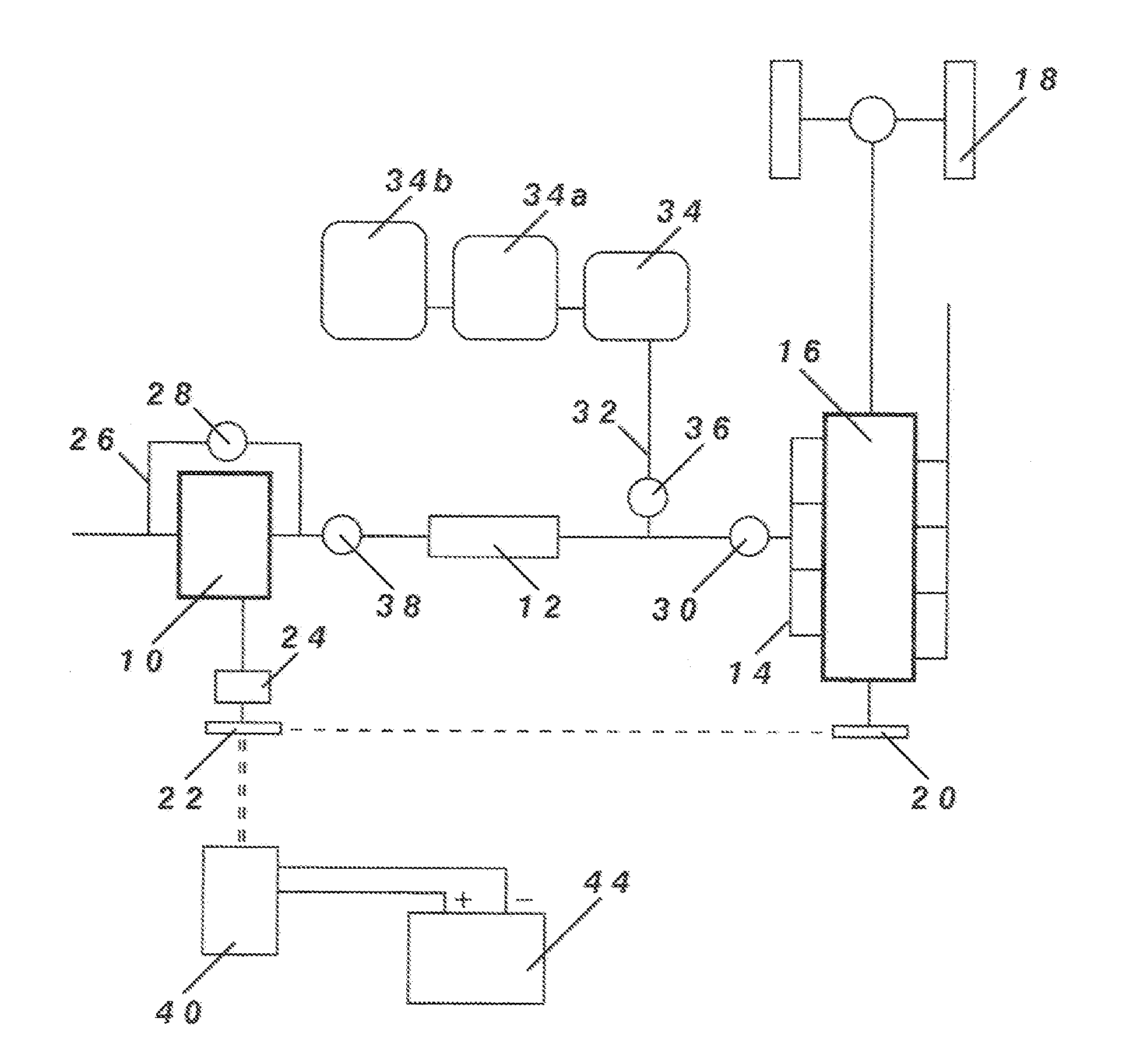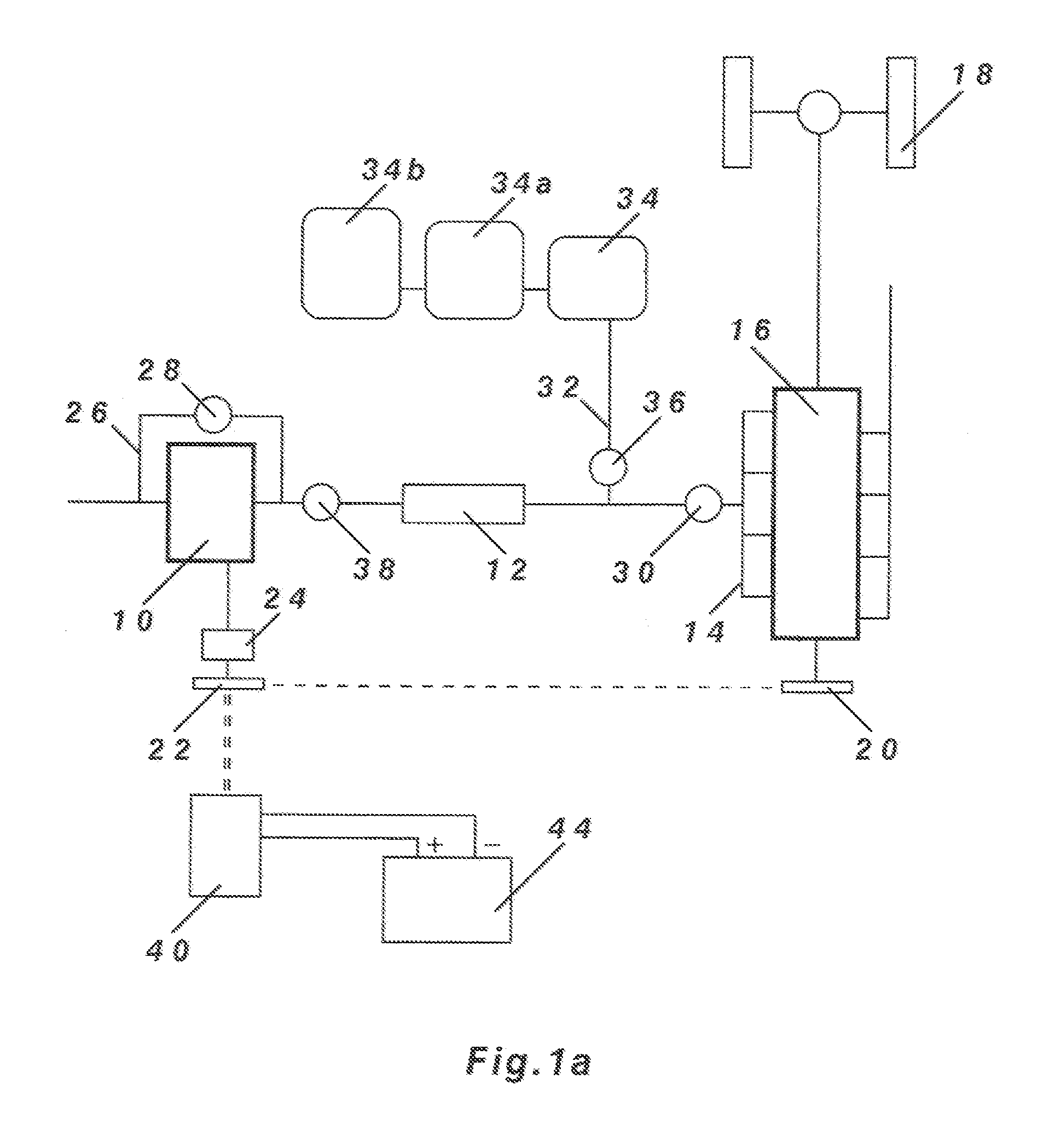Air hybrid vehicle
- Summary
- Abstract
- Description
- Claims
- Application Information
AI Technical Summary
Benefits of technology
Problems solved by technology
Method used
Image
Examples
Embodiment Construction
[0048]FIG. 1a shows an internal combustion engine 16 driving the wheels 18 of a road vehicle. The engine 16 is equipped with a supercharger 10 supplying boost air to the engine via an intercooler 12 and intake manifold 14. The supercharger 10 may be driven by the engine from a pulley 20 in the engine to a pulley 22 in the supercharger as shown by the single dashed line. The pulley 22 may be a clutch pulley which can be engaged or disengaged at any time on demand. Alternatively, the supercharger 10 may be driven by an electric motor 40 as shown by the double dashed line. A variable speed ratio drive 24 is also shown for driving the supercharger 10 at an optimum speed ratio with the engine.
[0049]The supercharger 10 has an air bypass system comprising a bypass connection 26 between the entry and the exit of the supercharger 10 controlled by a bypass valve 28. When boost is required, the bypass valve 28 is closed and the supercharger 10 is driven on load to produce boost air delivered t...
PUM
 Login to View More
Login to View More Abstract
Description
Claims
Application Information
 Login to View More
Login to View More - R&D
- Intellectual Property
- Life Sciences
- Materials
- Tech Scout
- Unparalleled Data Quality
- Higher Quality Content
- 60% Fewer Hallucinations
Browse by: Latest US Patents, China's latest patents, Technical Efficacy Thesaurus, Application Domain, Technology Topic, Popular Technical Reports.
© 2025 PatSnap. All rights reserved.Legal|Privacy policy|Modern Slavery Act Transparency Statement|Sitemap|About US| Contact US: help@patsnap.com



